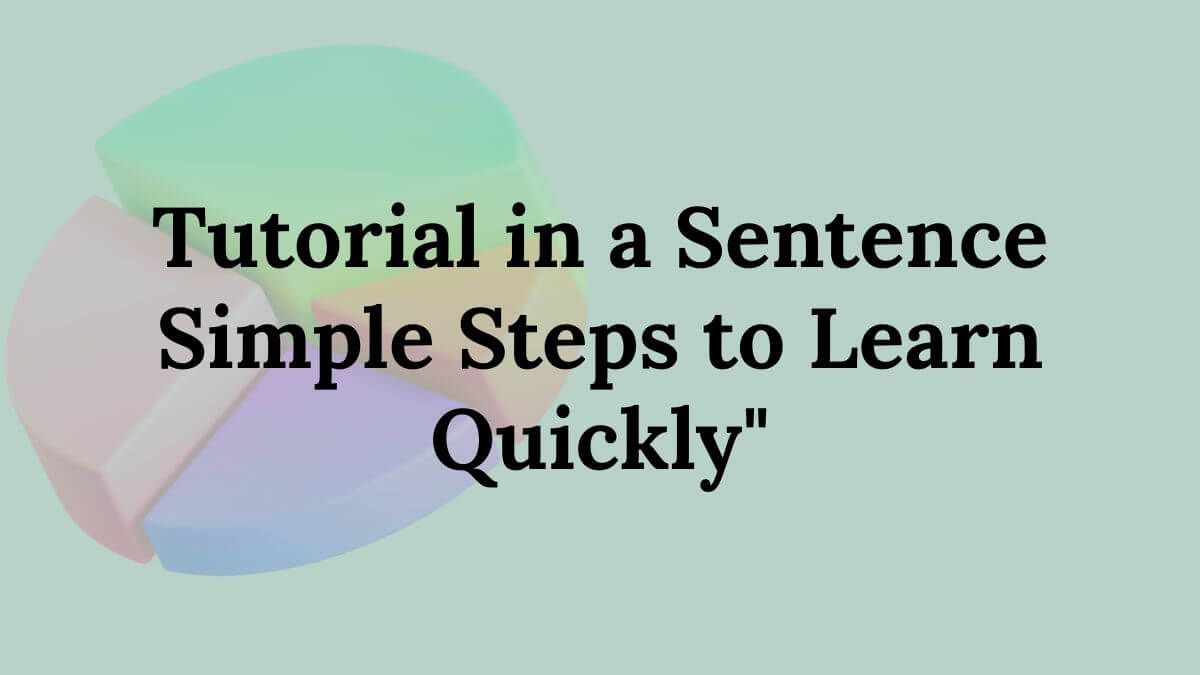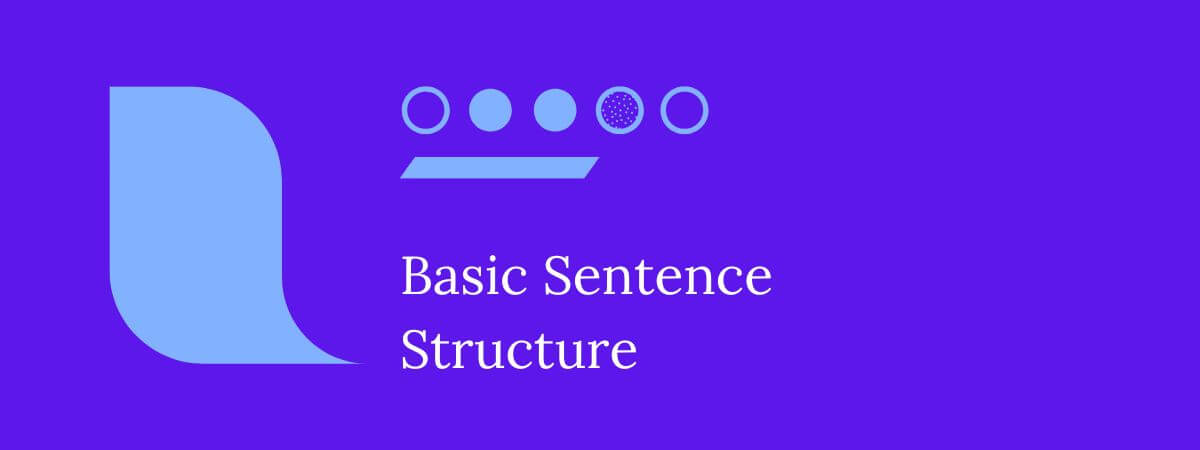Learn how a tutorial in a sentence can help you understand complex topics quickly. Discover simple steps, psychology insights, and WordPress web design tips for faster learning. Learning something new can sometimes feel overwhelming. Whether you’re diving into a complex subject like web design or trying to master a new software tool, tutorials often come with lengthy explanations, multiple steps, and technical jargon that can make the process confusing. But what if you could grasp the core of any tutorial in just one clear sentence?
That’s where the idea of a tutorial in a sentence comes in—a simple yet powerful method to help you learn quickly and effectively. By distilling the main idea into a concise, easy-to-remember sentence, you can focus your attention on the essentials, avoid information overload, and stay motivated throughout your learning journey.
This approach works for learners at every level, from beginners just starting out to professionals looking to refresh their skills. Instead of getting lost in the details, you’ll have a guiding sentence that summarizes the key takeaway. This clarity can boost your confidence, improve your retention, and make it easier to apply what you learn in real situations.
In this post, we’ll dive deeper into what a tutorial in a sentence means, why it works based on psychology principles, and how you can create your own effective learning sentences. Plus, we’ll see how this technique fits perfectly with WordPress web design services and other skills you want to master fast.
What Is a Tutorial in a Sentence?
A tutorial in a sentence is essentially a concise summary that captures the essence of what you want to learn. Think of it as your personal learning mantra—something brief but meaningful enough to guide your focus throughout the learning process.
Instead of getting overwhelmed by long tutorials filled with technical details, a tutorial in a sentence helps you zero in on the core idea or skill. It acts like a mental shortcut, allowing you to remember the most important step or concept quickly. This short sentence serves as a constant reminder of your goal, keeping you on track and motivated as you work through the material.
For example, if you want to learn how to create a simple WordPress website, your tutorial in a sentence might be: “Build a responsive WordPress site by choosing a theme, customizing it, and adding essential plugins.” This one sentence highlights the key actions without unnecessary complexity.
By summarizing tutorials this way, you make learning more manageable, clearer, and more effective. It’s a technique anyone can use to simplify complex topics and learn faster.
Why Use a Tutorial in a Sentence?
Breaking down complex tutorials into a single, clear sentence offers several powerful benefits that can transform the way you learn:
- Understand the Main Idea Quickly:
Long tutorials can be overwhelming, especially when they include a lot of technical details or jargon. A tutorial in a sentence helps you focus on the core concept immediately, saving time and mental energy. - Retain Information Longer:
Our brains remember simple, clear statements much better than lengthy explanations. When you summarize a tutorial into one meaningful sentence, it becomes easier to recall what you’ve learned later on. - Apply the Knowledge Practically Without Confusion:
Learning is most effective when you can put it into action. A concise sentence clarifies the key steps or goals, helping you avoid confusion and apply your new skills confidently in real situations.
Using a tutorial in a sentence is like having a handy learning cheat sheet — it simplifies the process and boosts your ability to grasp, remember, and use new information quickly.
How to Create Your Own Tutorial in a Sentence
Creating a tutorial in a sentence is simple but requires a bit of focus. The goal is to condense a complete learning process into one clear, actionable line that guides your understanding and execution. Here’s a step-by-step method to help you do it:
Step 1: Identify the Core Goal
Start by asking yourself: What am I trying to learn or accomplish?
Strip away all the extra information and focus on the central objective. For example, if you’re learning how to set up a WordPress website, your core goal might be “build a functional and responsive website.”
Step 2: Break It into Key Actions
What are the 2–3 most important steps required to reach that goal? Think in terms of actions. For WordPress, that could be:
- Choose a theme
- Customize the layout
- Add necessary plugins
Step 3: Use Simple, Clear Language
Avoid jargon or complicated terms. The sentence should be understandable to a beginner. Clarity is more important than technical depth.
✅ Example:
“Build a basic WordPress website by selecting a theme, adding content, and optimizing for mobile.”
Step 4: Keep It Short and Focused
Your sentence should be no more than 10–15 words. This keeps your focus sharp and avoids distractions.
Step 5: Make It Action-Oriented
Use verbs that prompt action—like create, design, build, optimize, or write. Action-driven sentences motivate you to take steps rather than passively consume content.
Pro Tip: You can create multiple tutorial sentences if you’re tackling a big topic. Break it down into stages, and write one sentence per stage for better clarity.
By mastering this method, you’ll not only simplify learning for yourself but also communicate ideas more effectively—whether you’re teaching, blogging, or building your WordPress portfolio.
Examples of Tutorial in a Sentence
Here are a few examples that show how a tutorial can be summarized clearly:
- “Create a WordPress blog by choosing a theme, installing plugins, and publishing your first post.”
- “Learn basic Photoshop skills by practicing cropping, layering, and color correction.”
- “Build an online store by setting up WooCommerce, adding products, and configuring payments.”
The Role of Psychology in a Sentence for Effective Learning
Understanding the psychology behind learning can improve how we create and use tutorials in a sentence. Short, clear sentences align with how our brains prefer to absorb and retain information. When you craft your tutorial sentence carefully, it taps into:
- Cognitive load theory: Simplifies learning by reducing unnecessary details.
- Memory retention: Short sentences are easier to remember and recall.
- Motivation: Clear goals boost confidence and willingness to learn.
Using a psychology sentence approach in your tutorials means you keep learners motivated and engaged, especially when teaching web design or any technical skill.
How This Helps in WordPress Web Design Services
As a WordPress web designer, using the tutorial in a sentence method can streamline your teaching and client communication. For example:
- When guiding clients through content updates, provide simple instructions summarized in a sentence.
- Use concise sentences in tutorials you create for your portfolio or blog to attract readers and potential clients.
- Highlight key steps for SEO, ensuring your content ranks better and reaches more users.
Clear sentences improve user experience and help you showcase your expertise effectively.
Tips for Writing SEO-Friendly Tutorials in a Sentence
If you want your tutorials to rank well in search engines and attract organic traffic, keep these tips in mind:
Conclusion: Master Learning with a Tutorial in a Sentence
A tutorial in a sentence is a simple yet powerful tool to learn quickly and clearly. By summarizing the core of any tutorial into a single, actionable sentence, you reduce confusion, increase retention, and make your learning process more enjoyable. Whether you’re designing a WordPress website, writing content, or studying psychology sentences, this approach helps you focus on what truly matters.Try creating your own tutorial in a sentence today and experience how it transforms your learning journey!

